Messier catalog
The Messier catalog is a listing of 110 stationary astronomical objects (mainly galaxies , star clusters, and nebulae ) that appear foggy and are not comets. It is the first in a long series of fog catalogs .
The French astronomer Charles Messier published this catalog for the first time in 1771. It contained 45 objects. After mediation by Jérôme Lalande , there was a collaboration with Pierre Méchain , with whose help the catalog grew to 103 objects in two further publications by 1784. It was later "filled" up to 110 objects by science historians. Most of the catalog items had not been known before.
The Messier catalog was and is of great practical importance. It was one of the starting points for the systematic exploration of galaxies, nebulae and star clusters. The numbers given by him are still the usual designation for many important celestial objects.
History of origin
Charles Messier's research interest was “comet hunting”. By 1801 he had discovered the impressive number of 20 new comets . In his search for comets he repeatedly came across diffuse “spots” that looked similar to comets, but in contrast to comets did not noticeably change their position in the sky. This non-existent proper motion indicated that these are objects far outside the solar system.
In order to avoid confusion and in order not to waste time on these objects in the further search for a comet, Messier created a catalog of foggy objects, whose position and visible properties he recorded. Catalog number 1, in today's parlance "Messier 1" or M1 , was given to the Crab Nebula (Crab Nebula) in the constellation Taurus . The other objects were numbered in the order in which they were added to the catalog. The Andromeda galaxy , a galaxy in the constellation Andromeda , for example, is called M31 .
The actual catalog ultimately contained the objects M1 to M103 and was published in three parts:
- in 1774: M1 to M45 in Mémoires de l'Academie 1771 ,
- in 1780: M1 to M70 in Connaissance des temps 1783 and
- in 1781: M1 to M103 in Connaissance des temps 1784 .
Today the Messier catalog also includes objects M104 to M110:
- M104 was handwritten by Messier in his own copy of his catalog.
- In 1781 and 1782 Méchain discovered the objects M105 to M109 and were mentioned in a letter to Johann III Bernoulli . Messier himself mentioned M108 and M109 in his description of the M97 object , but for unknown reasons did not include them as independent objects in his catalog.
All of these objects were only added to the Messier catalog retrospectively, between 1921 and 1966, by science historians on the grounds that they would most likely have found their way into the planned but never published fourth version of Messier's catalog. In particular the last objects never published by Messier, but also some objects in the published catalog, were later rediscovered by various astronomers (such as Wilhelm Herschel ) independently of Messier's observations.
meaning
The Messier catalog was not the first of its kind, but it was the first of its kind that was largely complete and error-free so that it could be used for practical observations. Even today, most of the objects in the catalog are mainly known by their Messier numbers.
At the time the Messier catalog was drawn up, the nature of the objects listed there was unclear. The research that clarified what galaxies , nebulae and star clusters were all about started from the Messier Catalog, the New General Catalog and the Index Catalog .
The Messier catalog is particularly popular among amateur astronomers and in public observatories , as the objects listed in it can already be observed with smaller telescopes or powerful binoculars . The Messier marathons represent a special observation task , during which each participant has to observe all Messier objects over the course of a single night.
Faults and limits
The catalog has at most one incorrect entry: There is no consensus among science historians whether Messier 102 is an incorrect second performance of the Messier 101 object or an observation of the spindle galaxy NGC 5866, which functions as M102 in modern versions of the catalog.
Furthermore, the Messier catalog has two entries that do not designate two-dimensional objects, namely Messier 40 , actually the double star Winnecke 4 , and Messier 73 , a group of stars that are a random fluctuation in star density on this line of sight.
A number of nebulae known today cannot be found in the Messier catalog because they are too faint. These include the Horsehead Nebula and some brighter galaxies that were later listed in the New General Catalog (1888) and in the Index Catalog (first version 1895, second version 1908). Also some lighter objects like the double star cluster h + Chi in Perseus and the Hyades do not have a catalog entry.
In the Messier catalog only objects visible from the northern hemisphere were taken into account, it only contains objects north of the −35 ° declination .
Overview map
List of Messier objects
| Abbreviations | |||||||
|---|---|---|---|---|---|---|---|
| Object type | Object type | Object type | |||||
| Gal. | Galaxy in general | SpiG | Spiral galaxy | BaSpiG | Barred spiral galaxy | ||
| EllG | Elliptical galaxy | Ling | Lenticular galaxy | SeyG | Seyfert Galaxy | ||
| RaG | Radio galaxy | ZwG | Dwarf galaxy | IrrG | Irregular galaxy | ||
| OfSH | Open star cluster | KuSH | Globular clusters | SH | Star clusters in general | ||
| St. | star | DS | Double star | Branch. | Asterism | ||
| VrS | Variable star | VrDS | Changeable Double star | You where | Dark cloud | ||
| GNb | Gas mist in general | PlNb | Planetary nebula | EmNb | Emission nebula | ||
| ReNb | Reflection fog | DiNb | Diffuse fog | SuNo | Supernova remnant | ||
Galaxies star clusters stars nebulae
Everything green are galaxies. The remaining objects are part of our Milky Way.
| No. | NGC No. | Surname | Object type |
Removal ( lj ) |
Constellation |
Size (mag) |
image |
|---|---|---|---|---|---|---|---|
| M1 | NGC 1952 | Crab Nebula | SuNo | 6,300 | bull | 8.4 |

|
| M2 | NGC 7089 | KuSH | 37,500 | Aquarius | 6.5 |

|
|
| M3 | NGC 5272 | KuSH | 30,600 | Hunting dogs | 6.2 |

|
|
| M4 | NGC 6121 | KuSH | 6,800 | Scorpio | 5.6 |

|
|
| M5 | NGC 5904 | KuSH | 22,800 | Snake | 5.6 |

|
|
| M6 | NGC 6405 | Butterfly cluster | OfSH | 2,000 | Scorpio | 5.3 |

|
| M7 | NGC 6475 | Ptolemy's star cluster | OfSH | 800 | Scorpio | 4.1 |

|
| M8 | NGC 6523 | Lagoon fog | DiNb | 5,200 | Sagittarius | 6.0 |

|
| M9 | NGC 6333 | KuSH | 26,400 | Snake bearer | 7.7 |

|
|
| M10 | NGC 6254 | KuSH | 13,400 | Snake bearer | 6.7 |
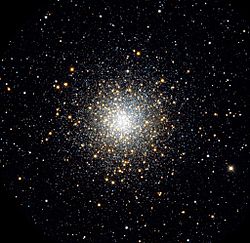
|
|
| M11 | NGC 6705 | Wild duck pile | OfSH | 6,000 | sign | 6.3 |

|
| M12 | NGC 6218 | KuSH | 17,600 | Snake bearer | 6.6 |

|
|
| M13 | NGC 6205 | Hercules cluster | KuSH | 22,200 | Hercules | 5.7 |

|
| M14 | NGC 6402 | KuSH | 27,400 |
Snake bearer |
7.7 |

|
|
| M15 | NGC 7078 | KuSH | 32,600 | Pegasus | 6.0 |

|
|
| M16 | NGC 6611 | Eagle Nebula | OfSH + DiNb |
7,000 | Snake | 6.4 |

|
| M17 | NGC 6618 | Omega nebula | DiNb | 5,000 | Sagittarius | 7.5 |

|
| M18 | NGC 6613 | OfSH | 4,900 | Sagittarius | 7.5 |

|
|
| M19 | NGC 6273 | KuSH | 27,100 | Snake bearer | 6.6 |

|
|
| M20 | NGC 6514 | Trifid nebula |
DiNb | 5,200 | Sagittarius | 9.0 |

|
| M21 | NGC 6531 | OfSH | 4,250 | Sagittarius | 6.5 |

|
|
| M22 | NGC 6656 | KuSH | 10.100 | Sagittarius | 5.9 |

|
|
| M23 | NGC 6494 | OfSH | 2,150 | Sagittarius | 6.9 |

|
|
| M24 | IC 4715 | Sagittarius cloud / dent caustiche |
Branch. | 10,000 | Sagittarius | 4.6 |

|
| M25 | IC 4725 | OfSH | 2,000 | Sagittarius | 6.5 |

|
|
| M26 | NGC 6694 | OfSH | 5,000 | sign | 9.3 |

|
|
| M27 | NGC 6853 | Dumbbell nebula | PlNb | 1,250 | Fox | 7.4 |

|
| M28 | NGC 6626 | KuSH | 15,000 | Sagittarius | 7.3 |

|
|
| M29 | NGC 6913 | OfSH | 7,200 | swan | 7.1 |

|
|
| M30 | NGC 7099 | KuSH | 25,000 | Capricorn | 8.4 |

|
|
| M31 | NGC 224 | Andromeda Galaxy | SpiG (Sb) |
2,900,000 | Andromeda | 3.4 |

|
| M32 | NGC 221 | ZwG | 2,900,000 | Andromeda | 8.1 |

|
|
| M33 | NGC 598 | Triangle nebula | SpiG (Sc) |
3,000,000 | triangle | 5.7 |

|
| M34 | NGC 1039 | OfSH | 1,400 | Perseus | 5.5 |

|
|
| M35 | NGC 2168 | OfSH | 2,800 | Twins | 5.3 |

|
|
| M36 | NGC 1960 | OfSH | 4,100 | Carter | 6.3 |

|
|
| M37 | NGC 2099 | OfSH | 4,400 | Carter | 6.2 |

|
|
| M38 | NGC 1912 | OfSH | 4,200 | Carter | 7.4 |

|
|
| M39 | NGC 7092 | OfSH | 825 | swan | 4.6 |

|
|
| M40 | no | Winnecke 4 | DS (Ast.) |
510 | Big Bear | 8.4 |

|
| M41 | NGC 2287 | OfSH | 2,300 | Big dog | 4.5 |

|
|
| M42 | NGC 1976 | Orion Nebula | DiNb | 1,300 | Orion | 4.0 |

|
| M43 | NGC 1982 | de Mairans nebula seen in the picture above left ; is now considered part of the Orion Nebula M42 |
DiNb | 1,300 | Orion | 9.0 |

|
| M44 | NGC 2632 | Nativity Scene (Praesepe) | OfSH | 577 | cancer | 3.7 |

|
| M45 | NGC 1435 | Pleiades | OfSH | 440 | bull | 1.6 |

|
| M46 | NGC 2437 | OfSH | 5,400 | Aft deck of the ship | 6.0 |

|
|
| M47 | NGC 2422 | OfSH | 1,600 | Aft deck of the ship | 4.5 |

|
|
| M48 | NGC 2548 | OfSH | 1,500 | Water snake | 5.5 |

|
|
| M49 | NGC 4472 | EllG | 60,000,000 | Virgin | 8.4 |
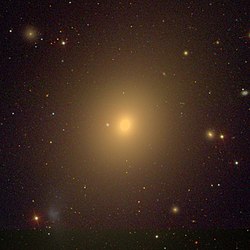
|
|
| M50 | NGC 2323 | OfSH | 3,200 | unicorn | 5.9 |

|
|
| M51 | NGC 5194+ NGC 5195 |
Whirlpool galaxy |
SpiG (Sc1) |
37,000,000 | Hunting dogs | M51: 8.4 M51b: 9.6 |

|
| M52 | NGC 7654 | OfSH | 5,000 | Cassiopeia | 7.3 |

|
|
| M53 | NGC 5024 | KuSH | 58,000 | Berenike's hair | 7.6 |
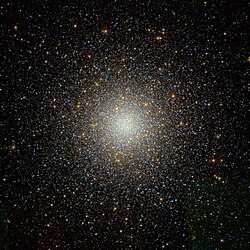
|
|
| M54 | NGC 6715 | KuSH | 87,400 | Sagittarius | 7.6 |

|
|
| M55 | NGC 6809 | KuSH | 17,300 | Sagittarius | 6.3 |

|
|
| M56 | NGC 6779 | KuSH | 32,900 | lyre | 8.3 |

|
|
| M57 | NGC 6720 | Ring nebula |
PlNb | 4,100 | lyre | 8.8 |

|
| M58 | NGC 4579 | BaSpiG (Sb / SBb) |
60,000,000 | Virgin | 9.7 |

|
|
| M59 | NGC 4621 | EllG | 60,000,000 | Virgin | 9.6 |

|
|
| M60 | NGC 4649 | EllG | 60,000,000 | Virgin | 8.8 |

|
|
| M61 | NGC 4303 | SpiG (Sc) |
60,000,000 | Virgin | 9.7 |

|
|
| M62 | NGC 6266 | KuSH | 22,500 |
Snake bearer |
6.5 |

|
|
| M63 | NGC 5055 | Sunflower galaxy | SpiG (Sb) |
37,000,000 | Hunting dogs | 8.6 |

|
| M64 | NGC 4826 | Black-eye galaxy |
SpiG (Sb) |
12,000,000 | Berenike's hair | 8.5 |

|
| M65 | NGC 3623 | SpiG | 35,000,000 | lion | 9.3 |

|
|
| M66 | NGC 3627 | BaSpiG | 35,000,000 | lion | 8.9 |

|
|
| M67 | NGC 2682 | OfSH | 2,700 | cancer | 6.1 |

|
|
| M68 | NGC 4590 | KuSH | 33,300 | Water snake | 7.8 |

|
|
| M69 | NGC 6637 | KuSH | 29,700 | Sagittarius | 7.6 |

|
|
| M70 | NGC 6681 | KuSH | 29,300 | Sagittarius | 7.9 |

|
|
| M71 | NGC 6838 | KuSH | 13,000 | arrow | 8.2 |

|
|
| M72 | NGC 6981 | KuSH | 55,400 | Aquarius | 9.3 |

|
|
| M73 | NGC 6994 | Branch. | 2,500 | Aquarius | 9.0 |

|
|
| M74 | NGC 628 | SpiG | 35,000,000 | fishes | 9.4 |

|
|
| M75 | NGC 6864 | KuSH | 67,500 | Sagittarius | 8.5 |

|
|
| M76 | NGC 650+ NGC 651 |
Small dumbbell nebula | PlNb | 3,400 | Perseus | 10.1 |

|
| M77 | NGC 1068 | SpiG | 60,000,000 | whale | 8.9 |

|
|
| M78 | NGC 2068 | ReNb | 1,600 | Orion | 8.3 |

|
|
| M79 | NGC 1904 | KuSH | 42,100 | Hare | 7.7 |

|
|
| M80 | NGC 6093 | KuSH | 32,600 | Scorpio | 7.3 |

|
|
| M81 | NGC 3031 | Bode fog |
SpiG (Sb) |
12,000,000 | Big Bear | 6.9 |

|
| M82 | NGC 3034 | Cigar galaxy |
SpiG (SBc) |
11,000,000 | Big Bear | 8.4 |

|
| M83 | NGC 5236 | southern firewheel galaxy |
SpiG | 15,000,000 | Water snake | 7.6 |

|
| M84 | NGC 4374 | EllG (E0) | 60,000,000 | Virgin | 9.1 |

|
|
| M85 | NGC 4382 | EllG (E0) | 60,000,000 | Berenike's hair | 9.1 |

|
|
| M86 | NGC 4406 | EllG (E0) | 60,000,000 | Virgin | 8.9 |

|
|
| M87 | NGC 4486 | Virgo A galaxy |
EllG | 60,000,000 | Virgin | 8.6 |

|
| M88 | NGC 4501 | SpiG | 60,000,000 | Berenike's hair | 9.6 |

|
|
| M89 | NGC 4552 | EllG | 60,000,000 | Virgin | 9.8 |

|
|
| M90 | NGC 4569 | SpiG | 60,000,000 | Virgin | 9.5 |

|
|
| M91 | NGC 4548 | SpiG | 60,000,000 | Berenike's hair | 10.2 |

|
|
| M92 | NGC 6341 | KuSH | 26,700 | Hercules | 6.4 |

|
|
| M93 | NGC 2447 | OfSH | 3,600 | Aft deck of the ship | 6.0 |

|
|
| M94 | NGC 4736 | SpiG | 14,500,000 | Hunting dogs | 8.2 |

|
|
| M95 | NGC 3351 | SpiG | 38,000,000 | lion | 9.7 |

|
|
| M96 | NGC 3368 | SpiG | 38,000,000 | lion | 9.2 |

|
|
| M97 | NGC 3587 | Owl Nebula | PlNb | 2,600 | Big Bear | 9.9 |

|
| M98 | NGC 4192 | SpiG | 60,000,000 |
Berenike's hair |
10.1 |
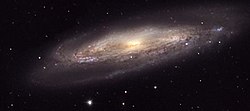
|
|
| M99 | NGC 4254 | SpiG | 60,000,000 |
Berenike's hair |
9.9 |

|
|
| M100 | NGC 4321 | SpiG | 60,000,000 |
Berenike's hair |
9.3 |

|
|
| M101 | NGC 5457 | Firewheel galaxy |
SpiG | 27,000,000 | Big Bear | 7.9 |

|
| M102 | NGC 5866 | EllG (E0) | 45,000,000 | Dragon | 9.9 |

|
|
| M103 | NGC 581 | OfSH | 8,500 | Cassiopeia | 7.4 |
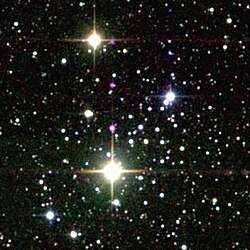
|
|
| M104 | NGC 4594 | Sombrero Galaxy | SpiG (Sa) | 50,000,000 | Virgin | 8.0 |

|
| M105 | NGC 3379 | EllG | 38,000,000 | lion | 9.3 |

|
|
| M106 | NGC 4258 | SpiG | 25,000,000 | Hunting dogs | 8.4 |

|
|
| M107 | NGC 6171 | KuSH | 20,900 |
Snake bearer |
7.9 |

|
|
| M108 | NGC 3556 | SpiG | 45,000,000 | Big Bear | 10.0 |

|
|
| M109 | NGC 3992 | SpiG | 55,000,000 | Big Bear | 9.8 |

|
|
| M110 | NGC 205 | EllG | 2,900,000 | Andromeda | 8.5 |

|
See also
Web links
- Charles Messier's original catalog
- Videos on (so far) 79 Messier objects at deepskyvideos.
- Messier Catalog Website (SEDS)
- German Messier catalog
- 2MASS Messier catalog
- Visual observations of the Messier objects ( Memento from January 27, 2013 in the Internet Archive )
- German Messier catalog with visual drawings, photos, maps, visibility diagrams and information
- Messier catalog with 20 cm reflector telescope and digital SLR camera (version 2.0)
Individual evidence
- ↑ Michael Odenkirchen, Caroline Soubiran: NGC 6994 - clearly not a physical stellar ensemble. In: Astronomy and Astrophysics . Vol. 383, No. 1, 2002, pp. 163-170, doi: 10.1051 / 0004-6361: 20011730 .
- ↑ Daniela B. Pavani, Eduardo Bica: Characterization of open cluster remnants. In: Astronomy and Astrophysics. Vol. 468, No. 1, 2007, pp. 139-150, doi: 10.1051 / 0004-6361: 20066240 .
- ↑ a b the messier objects on SEDS


